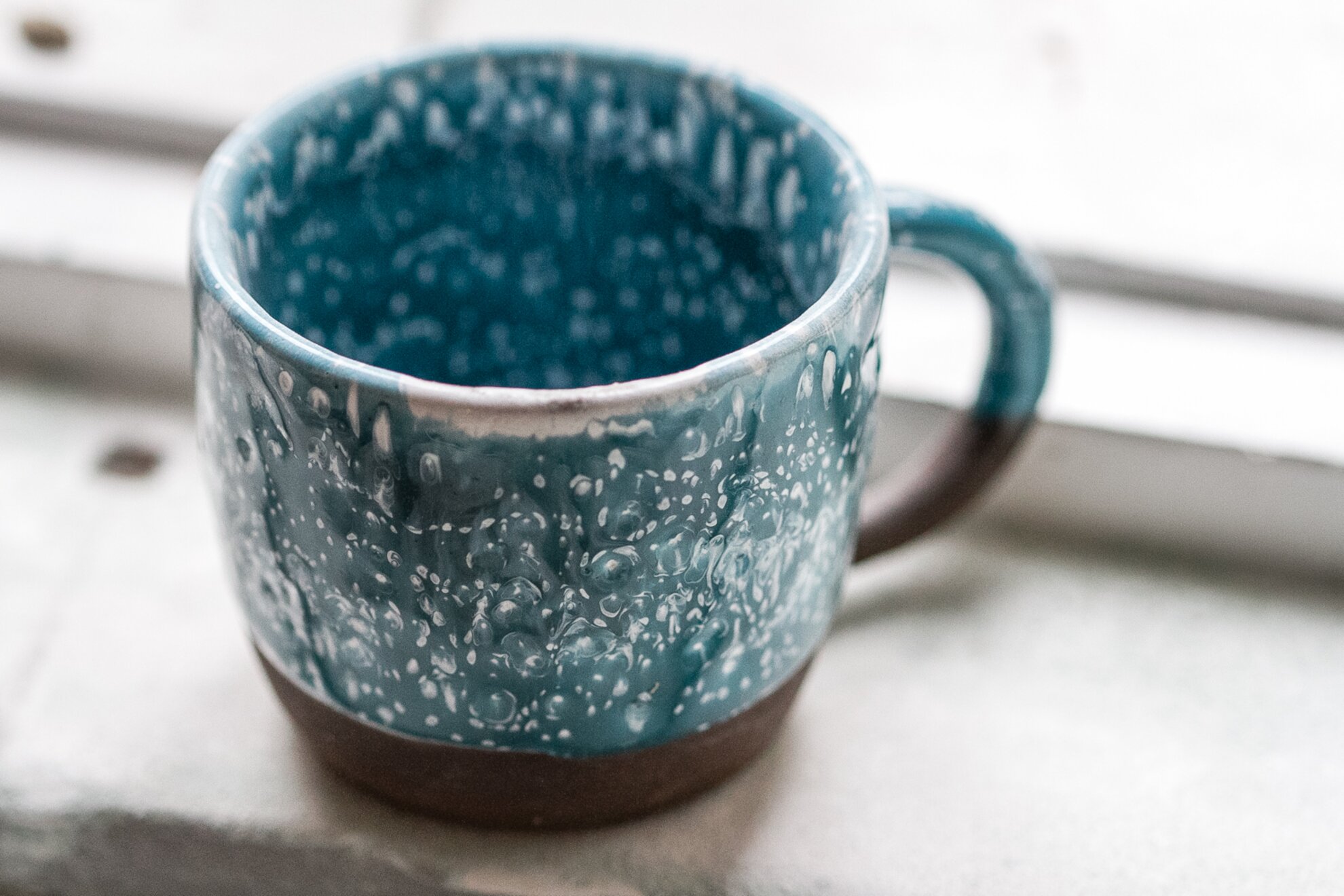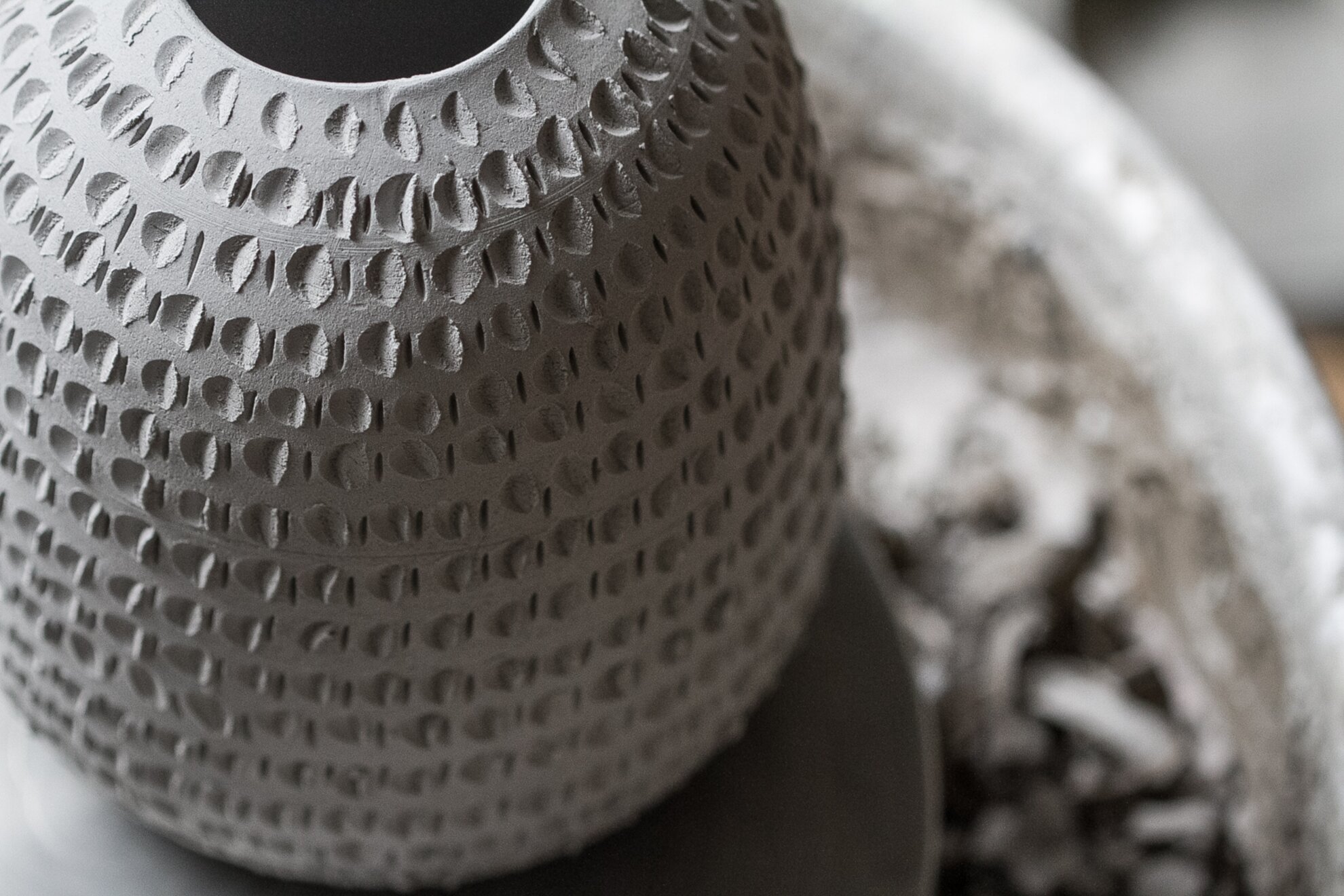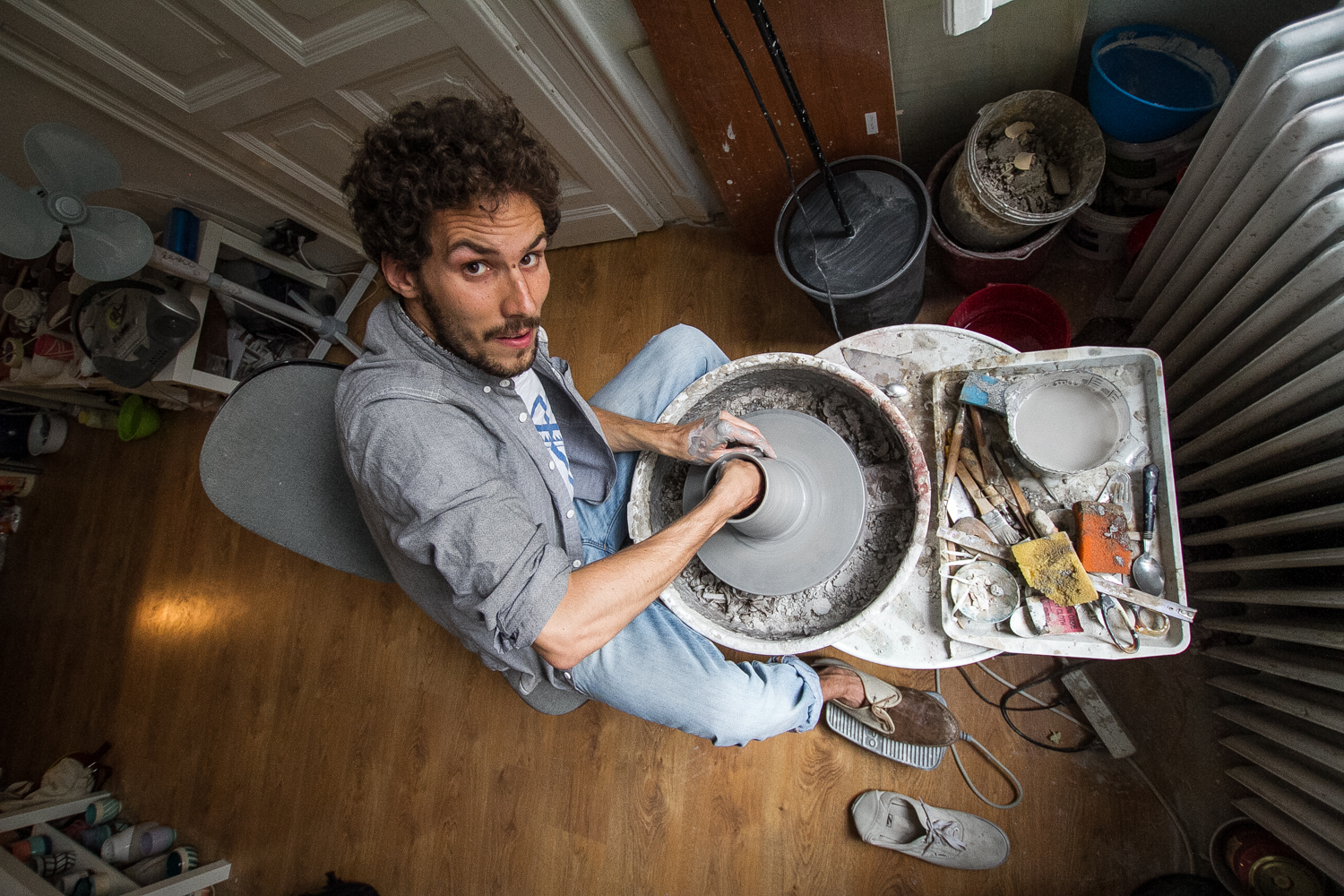Hungarian ceramicist Gábor Somoskői creates colorfully unique cups, bowls, and teapots, all crafted with fine motifs in an apartment-based workshop on the umpteenth floor of a downtown building in District V. But why would a young man with a background in sociological and cultural anthropological studies decide to change careers to one of humanity’s oldest crafts? How can creating a few dozen mugs lead to starting your own business? We asked Gábor about his passion for handcrafted objects, among many other things.
We Love Budapest: Nowadays people want possessions that are an alternative to mass-produced merchandise – objects with character and emotion, objects that tell us stories and stay with us for years. Uniquely handcrafted objects fill this need, and you fell in love with making ceramics more than a decade ago. How did all this start?
Gábor Somoskői:
When I was at school, I started playing with modeling clay for the first time in arts and crafts class, and the activity fascinated me to no end. Many years later I went to high school in the United States, and I had to take a compulsory art class; only the pottery class had space available. We mainly made statues and sculptures there, and we had a lot of project work. After I returned home, I did not work with ceramics again for many years. I still had creative interests, but for awhile I took photos and experimented with various mediums.

WLB: How did pottery come back into the picture?
GS:
After a banal recognition. At home, we only had these mass-produced, commercial mugs. But one time, I drank tea from a beautiful ceramic mug, and something touched me. Nice, handmade objects have souls and vibrations of their own. They give you something that a mass-produced item simply cannot.
Handcrafted objects have a very strong character, and fantastic energies are released even during their making. Then and there, I felt that I must own such an object, but one that I make myself. First, I bought a foot-propelled pottery wheel and had a go at it. After the first few pieces, I started making ceramic objects for gifts, and after a while, to sell as well.
I make objects specially designed for everyday use, like pots and bowls, but naturally the selection is constantly expanding. Nowadays, people can buy my works at many places, but Kezemura objects were first available at Telep, on the shelves of the Ykra Store.WLB: Telep is a sort of open receptive space, serving as a bar and artistic gallery, among other things. How did you find each other?
GS:
This is a very old connection. In 2008, Levente Trellay and I created the Heroine Workshop, where we experienced with many things. Among other things, we made pieces of furniture, and worked on the design of Telep together, as well. When I finished my first ceramic works, there was no question that they would be available here. Heroine Workshop played a very important role in my life.

WLB: You practiced a variety of creative activities before, but you did not participate in any kind of formal design training. However, the method of pottery making is quite regulated. Where did you pick up this knowledge?
GS:
I constantly went to, and still go to, various workshops and courses; in particular, I owe a lot to Kinga Saás and Anna Nagy Budai. Kezemura develops organically, as my professional knowledge grows together with the brand.
When I see an object that I want to create myself, or I get a new type of order, I just learn how to execute the given project. I go to the library a lot, any I have a mentor, as well. I am an intuitive type, I do not draw much, and I prefer working and experimenting with the actual material instead. I deliberately work with simple, low-key, archaic forms, but I think that the subdued tones, gradient colors, and masked geometric décor make these pieces quite modern.

WLB: Your works became popular in a very short time. Are you developing these, or are you working on new products?
GS:
For now, my ceramics are only available in my workshop, Ykra Store, and Pesti Szatócs, I get an increasing number of orders from abroad. I was discovered by a gallery in Copenhagen as well, and we are considering joint product development, but this cooperation is still in an early phase. I like my existing objects, and I like the color scheme – which reminds me of 1960s holiday homes at Lake Balaton – and the line-based decorations.I fire these products in an electric kiln, and in this case, the manufacturing process is rather controlled. I find the rawness of ceramics very attractive, and can see fantasy in developing a more rustic line, too. I started to make pot by blending light and dark clay together – this is fantastically beautiful after being fired, and colorless glaze is enough for it.
I find firing techniques from Asia very interesting, as well. In wood-fired kilns, the fire is in direct contact with the ceramics, in contrast with the European method, where the objects are fired separately. In a wood-fired kiln, we can make more vibrant ceramics, since even the flames leave marks, and the glaze’s randomly shaded surface is unrepeatable. Earthy tones go well with this direction, and even though I have no serious experience with these techniques yet, it would be nice to work with them.
I consider contemporary Japanese ceramics the gold standard, which inspired my Japanese-sounding brand name, too.

WLB: Previously, you typically worked in teams, but Kezemura is a one-person enterprise. How do you prefer to work, alone or with others?
GS:
I am very inspired by various collaborations; for example, I have worked on two projects with the interior-design team of Numbernow. Together we designed unique ceramic lampshades for a downtown bistro, and I made the dinnerware for Ramenka, as well. The owner gave me a free hand regarding the style of the bowls; the results are very tasteful pastel ceramics, in which the dishes prevail beautifully.
We talked a lot about what kind of dinnerware is used for what in Asia, and how various types of bowls have developed, why they are the way they are. After all, in Ramenka’s case, it is very important how quickly the soup cools after serving. Balance is very important in my work. My goal is to have works made in a succession of series, but also projects that provide continuous challenges. The two complement and reinforce each other, just like yin and yang.




